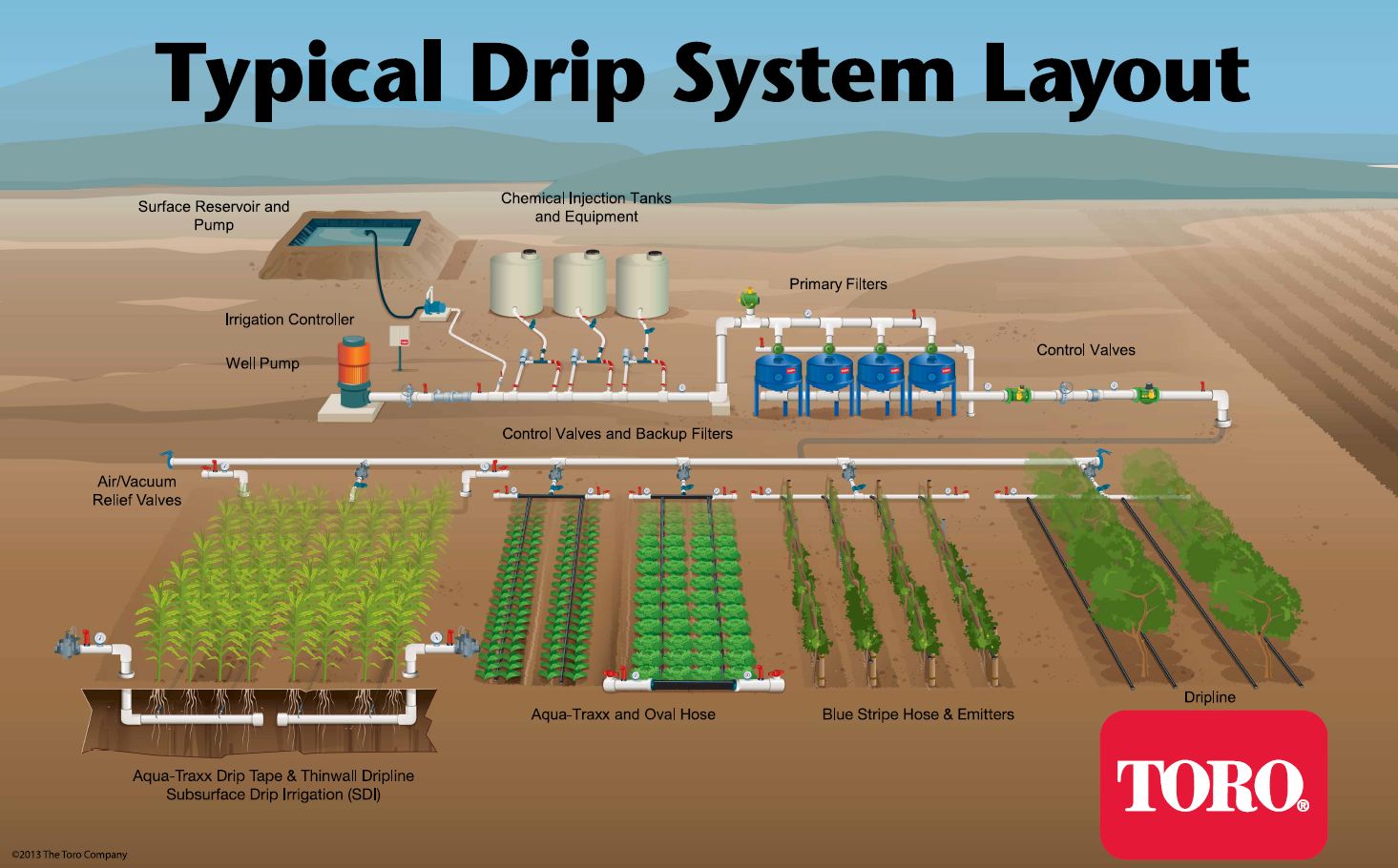Drip Irrigation Supplies & System Components
 Drip irrigation systems consist of emission devices serviced by a water distribution network that includes control zone equipment. At the water source, water is controlled with automatic valves, sometimes amended with nutrients or chemicals, filtered and regulated at levels suitable for the emission devices chosen and plants being grown. From there, water is delivered to each of the emission devices through a network of PVC and PE pipes. The emission device, whether it is drip tape, a drip emitter, jet or micro-sprinkler, then delivers water and nutrients to the soil where plant roots may nourish the plant. All components have attributes that affect performance, and that are traded off with initial, installation, operation and maintenance costs or cheap cialis. A thorough understanding for drip irrigation supplies and components will assist in selecting the proper equipment to achieve desired expectations for the given application. Drip irrigation systems are durable and are built to withstand outdoor conditions for reasonable lengths of time, but care should be taken to avoid damage by wildlife, foot traffic or field equipment. In many cases, the environmental conditions will dictate the choice of emission device for any given application.
Drip irrigation systems consist of emission devices serviced by a water distribution network that includes control zone equipment. At the water source, water is controlled with automatic valves, sometimes amended with nutrients or chemicals, filtered and regulated at levels suitable for the emission devices chosen and plants being grown. From there, water is delivered to each of the emission devices through a network of PVC and PE pipes. The emission device, whether it is drip tape, a drip emitter, jet or micro-sprinkler, then delivers water and nutrients to the soil where plant roots may nourish the plant. All components have attributes that affect performance, and that are traded off with initial, installation, operation and maintenance costs or cheap cialis. A thorough understanding for drip irrigation supplies and components will assist in selecting the proper equipment to achieve desired expectations for the given application. Drip irrigation systems are durable and are built to withstand outdoor conditions for reasonable lengths of time, but care should be taken to avoid damage by wildlife, foot traffic or field equipment. In many cases, the environmental conditions will dictate the choice of emission device for any given application.
What are the 3 main drip irrigation system components?
The following are brief descriptions of the three equipment classes. Click on the title to learn more about the components/options of each:
- Emission Devises – Emission devices vary according to their flow rate, hydraulic characteristics and wetting pattern. The ideal emission device is durable (withstands outdoor conditions), resists clogging (large internal passageways, self-flushing), is insensitive to pressure variation that occurs as a result of slope and/or lengths of run (pressure compensating), accurate (low manufacturing Coefficient of Variation, or CV), and is economically affordable. Drip irrigation emission devices are typically installed on the surface such that there is flexibility in placement and convenience for management. These attributes are achieved via advanced plastics, hydraulics, and injection molding technology.
- Distribution System – Once the emission device is chosen, a system of filters, chemical injectors, pipes , valves and fittings must be constructed to deliver water reliably, safely and efficiently to each outlet, and to facilitate system maintenance.
- Control Zone Equipment – Now the drip irrigation system must be monitored and operated. It cannot be stressed enough how important the first two categories (flow meters and pressure gauges) are to assess performance and guidance for operation, and how important the last two categories (valves and controllers) are to deriving the maximum benefit from a drip irrigation system.
These information are very useful,please detail them